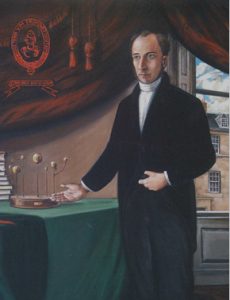At 11 am on the 11th Day of the 11th
month the guns fell silent and the fighting was over. The war to end all wars,
The Great War, was over. Every year, people gather at war memorials, grave
sites, battlefields, in churches and places of worship to fall silent for 2
minutes to remember all those killed in all conflicts.
Probably every family historian will have a family member
who served, fought or died in the First World War, certainly in the UK. Cities,
towns and villages lost a generation on the blood soaked battlefields of the
Western Front but also across the world in what was the first truly global war,
fought on an industrial scale with all the new technology of a industrial
world.
Over the next few weeks I am going to try and tell the
stories of just a few of these brave men who fought and died for their country.
I start with the story of two brothers, born into a
colonial, middle class Victorian family who died within 17 days of each other
in August 1918 during the final big offensives of the war, the final ‘Big
Push.’
Arthur Frederick Lakeman was born on 22nd August
1886, in Reading, Berkshire, the first son of Frederick Sanders Lakeman and his
wife, Amy. Fred and Amy had spent most of their lives living the colonial life
in Ceylon (now Sri Lanka). Fred was born in Ceylon and returned there in
adulthood. Amy’s father had been the manager of a hotel in the port of Galle.
Harold Leslie Lakeman was born in Ceylon on 28th
December 1888.
Fred and Amy returned to live in Scotland and the family
settled in the town of Lenzie, just outside Glasgow. There were three sons and
five daughters by 1912.
Arthur and Harold were educated at Lenzie Academy and Arthur
was employed as a banker in Glasgow. Harold became a chartered accountant and
by the time war broke out, he was living in Highbury, in North London.
In 1915, both enlisted as privates, Arthur joined the Argyll
and Sutherland Highlanders, and was later transferred to the 7th
Battalion The Royal Highlanders (Black Watch) and Harold joined the 2/28th
(County of London) Battalion of the London Regiment (Artists Rifles).
2nd Lieutenant Arthur Frederick Lakeman
Arthur’s service record suggests that he probably first saw
action during the attack on High Wood on 30th July 1916.
In January 1918, Arthur transferred as a 2nd
Lieutenant to the 15th Battalion Tank Corps, part of the 5th
Tank Brigade. On 5th August 1918, the battalion were moving their
tanks up to the front line. According to the battalion war diary, Arthur was
leading the tank on foot when he tripped on some barbed wire and was crushed. Arthur
is buried in St Pierre’s Cemetery, Amiens.
Harold gained a commission in the Army Service Corps,
probably using his administrative and accountancy skills to good effect. He was
wounded and wanting a return to the front line, he attended Infantry School and
in March 1918 he joined the 7th Battalion Lancashire Fusiliers.
2nd Lieutenant Harold Leslie Lakeman
On 22nd August 1918 the battalion was fighting
outside the village of Puisieux-au-Mont on the Somme. Harold was killed by a
sniper during a German counter attack and was initially buried on the
battlefield. Following the Armistice his body was removed and re-interred in
Queens Cemetery, Bucquoy.
There is one
photograph which sums up the tragedy of the Lakeman story. It is July 1918, in
a small Perthshire market town and two sons enjoy their last leave with their
family before returning to the front, simply described in their sister's photo
album as:
Mother and her boys







Comments
Post a Comment